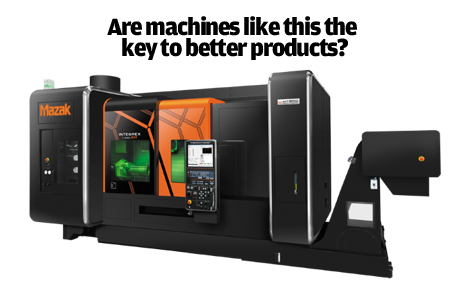
Joe Anand believes that the rise of Hybrid machines will remove the boundaries for design imposed by traditional manufacturing methods
In the lead up to DEVELOP3D’s special October edition on the world of metals 3D printing, we caught up with MecSoft Corporation president and CEO, Joe Anand, to find out how he views the new levels of creativity being given to designers by new manufacturing technologies.
With CNC tools now seen to complement the manufacturing abilities of 3D printers, its fair to say that Anand is excited for the drastic changes he foresees with the rise of Hybrid processes and machines:
Traditionally, manufacturing designers have been limited not by their imaginations but by the processes involved in creating new or innovative products.
Today, advancements in manufacturing technology have freed up these dreamers to think big, be significantly more creative and additionally given them the ability to realise designs quickly and cost effectively.
CNC machining and 3D printing technologies, specifically, are the stars on modern manufacturing floors and are affecting the way design is performed in a very fundamental way.
The technological advancement of 4- and 5-axis machining has helped reduce setup time, improves accuracy and repeatability (over 3-axis machines), and expands the capability of shops for future work such as deep cavity or tall core moulds.
These complex shapes were never thought possible to be manufactured but these new machines are expanding these boundaries and allowing classes of parts that were not possible to be manufactured before.
In a similar way, the introduction of multi-function machine tools that can perform multiple machining operations on different sides of a part also has added a new dimension to the machining of complex shapes and parts.
This opens up additional space for product designers to be more creative and productive in the designs that they conjure up.
In the most traditional manufacturing environment products are introduced to massive factories so that economy of scale production helps to make them more cost-effective.
However, 3D printing has taken advantage of restrictions in large-scale manufacturing, while reducing costs and improving performance simultaneously.
No longer do manufacturers have to go through high-cost assembly and secondary machine processes as this technology negates complex tooling requirements, high volume, and material waste.
The simplest example of this would be a chain with multiple links.
In a traditional manufacturing environment, individual shaping and assembly of each chain link would be required to form the chain.
With 3D printing the entire chain can be built up as one part.
Lattice and web-type structures built using 3D printing can significantly lower the weight requirements of parts while maintaining the same rigidity and strength.
Interestingly, incorporation of these structures significantly alters the look and feel of such parts when compared to similar parts that are traditionally manufactured.
Additionally, 3D printing allows the design of parts with multiple materials not possible in traditional manufacturing.
Hybrid technology is not just in cars these days and the combination of machining and 3D printing is making appearances in manufacturing labs everywhere.
This is opening up a whole new class of parts that can be designed and manufactured in ways that were never possible before.
Consider an example of a part with a soft metal core but with an outer shell of hard material that was 3D printed and finally finished by traditional CNC machining to bring the outer skin to the required surface finish and tolerances.
While some engineers are yet to admit full confidence in the integration of subtractive processes and 3D printing, advancements in both technologies are making products of these origins more commonplace every day.
The technologies of CNC machining and 3D printing are already drastically changing what was thought possible in design, engineering and manufacturing processes.
Independently, they allow manufacturers to save time, money and resources and are improving the strength and durability of products in the process.
When the two technologies are combined the only limiting factor is the imagination itself.
Joe Anand is president and CEO of MecSoft Corporation






